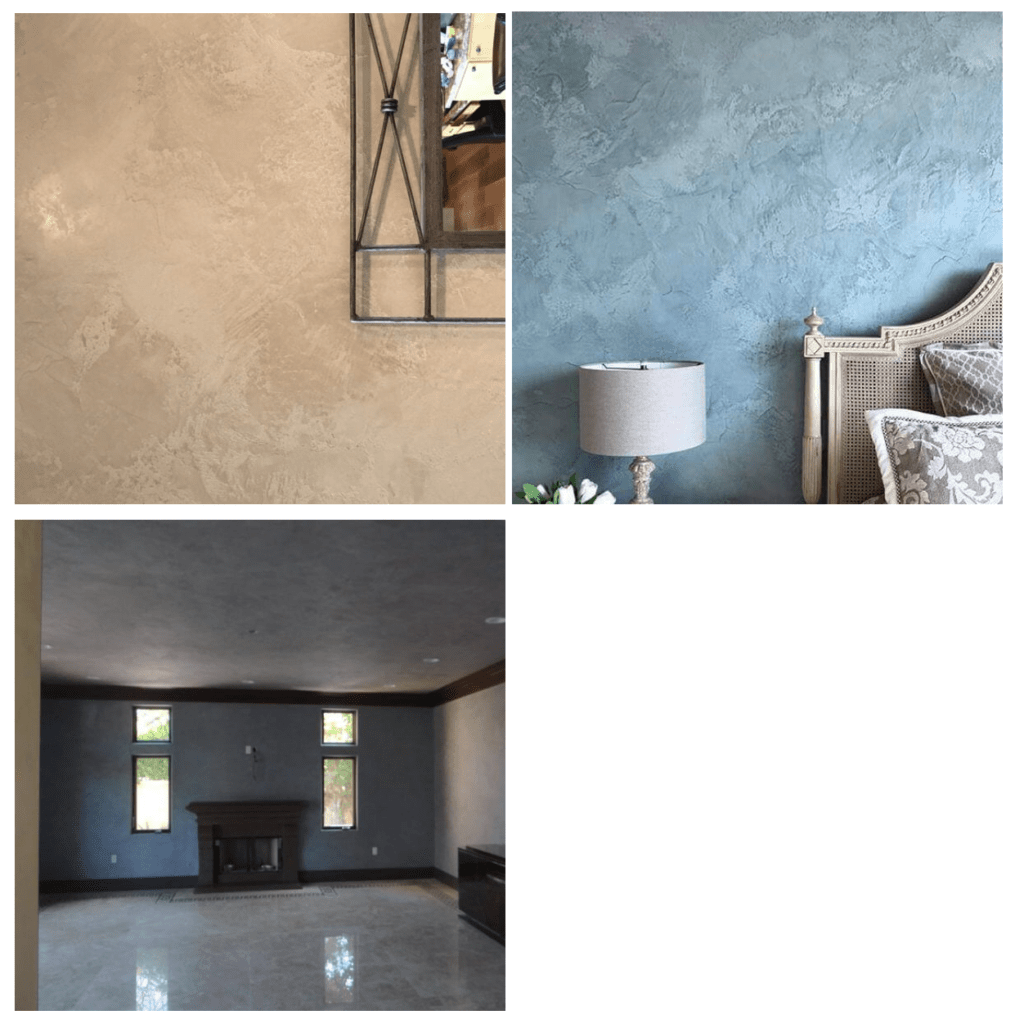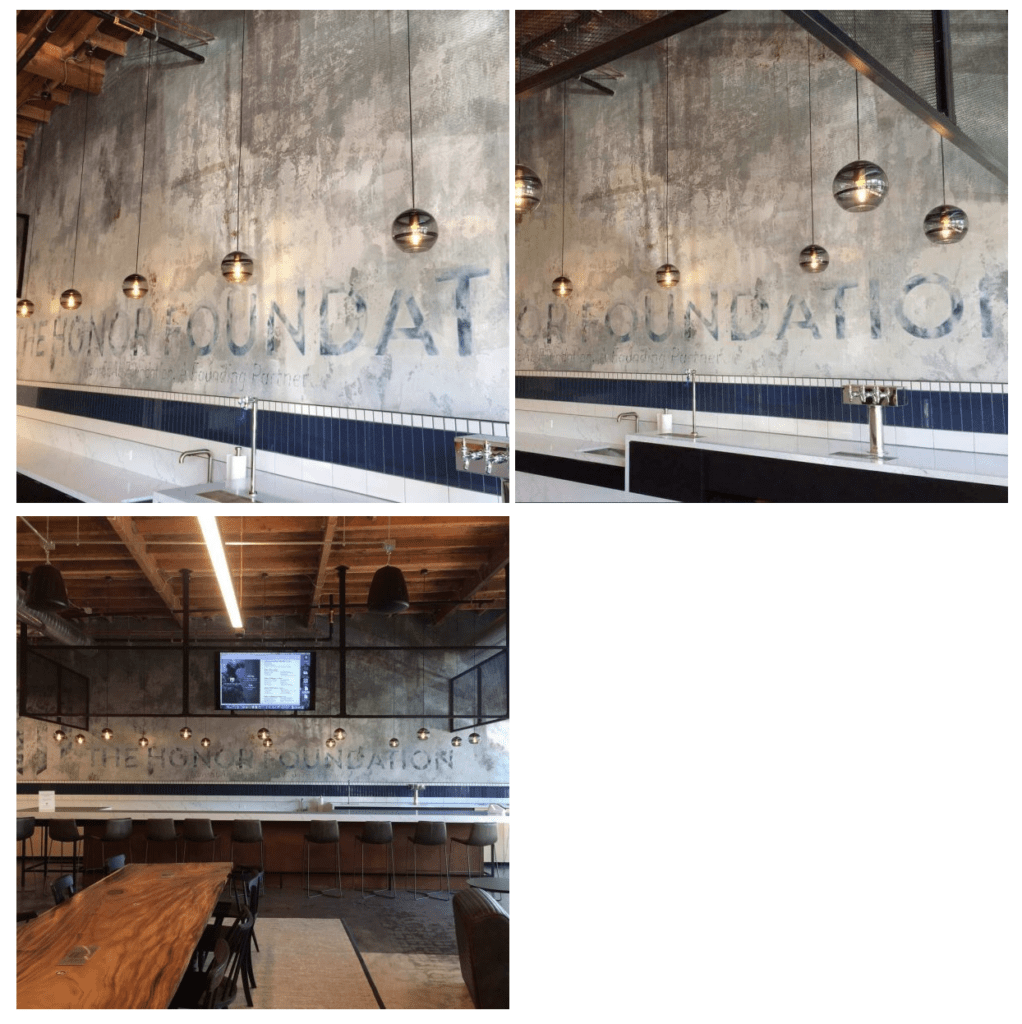Marmorino is a lime plaster that is easy to apply on interior/exterior surfaces. It may be used to produce stunning polished or textured stone effects with smooth matte to deep textures.
Venetian plaster, also known as Marmorino in Italian, is a classic Italian wall plaster that has gained international acclaim for its exceptional aesthetic value. It comprises an environmentally friendly lime-based finish that may be used on both exterior and interior surfaces.
What material is Marmorino composed of?
The Marmorino Plaster product we offer is an American-made plaster known by several names across the world, including:
- Lime Plaster
- Textured plaster
- Venetian plaster
- Polished plaster
- Italian plaster
Marmorino is a variety of Venetian plaster manufactured from lime putty, predominantly slaked lime, and marble dust, and it may be used to create a variety of satin, matt, and glossy textures, ranging from polished marble with fresco veins and natural stone to a monochromatic wall with light and dark shades.
Meoded’s Marmorino Tintoretto is a lime-based plaster used for both interior and exterior designs giving an elegant matte to low sheen finish compared to the traditional shiny Venetian plaster.
Meoded’s Marmorino Palladino lime plaster features a larger aggregate used to generate a coarser stone texture and stone, brick, and many other heavy textures.
Marmorino Venetian plaster may be tinted to produce plaster in a variety of hues. Meoded’s Velature Glaze is another unique topcoat for Marmorino plaster that is intended to produce a more natural impression on your wall. The lime plaster is inherently porous, and the addition of Velature Glaze helps to give it an old-world to contemporary finish.
The finish is delicate and natural, with layers that add depth and movement. This plaster differs from other ornamental lime plasters in that it lacks the coarse particles that give other plasters their thickness and texture.
Marmorino plaster materials possess a natural warmth and brightness that reflects light.

Where can Marmorino be used?
Marmorino Venetian Plaster is utilized in sophisticated settings such as commercial spaces, offices, restaurants, and residences.
This natural plaster finish is smooth and has a varying gloss depending on how much it has been burnished. In contrast to marble, Venetian plaster treatments often have a single soft color with subtle shadings. It is widely regarded for its artistic impact, which is one-of-a-kind when adequately illuminated.
Venetian plasters breathe naturally since they are made of limestone and are Zero VOC. Due to its ability to breathe and its high PH, it is resistant to mold and mildew.
Since this type of plaster is eco-friendly, it is gaining appeal in today’s construction environment.
Marmorino Plaster Application Guide
Preparation:
The surface should be smooth, clean, and free of contaminants. Protect adjacent surfaces from spattering by taping, masking, and covering them.
- New interior surface: Prime the substrate with PVA acrylic primer and allow it to dry completely. Following that, apply one layer of Meoded Quartz Primer™ and allow it to dry for at least 3-5 hours.
- Interior & exterior existing surface: Substrates that have been damaged should be patched and repaired. Sand surfaces with any sheen lightly, then prime with a multi-purpose primer and allow it to dry fully. Next, apply one layer of diluted Meoded Quartz Primer and allow it to dry for at least 3-5 hours. Smooth, level surfaces may be prepared simply by applying Meoded Quartz Primer.
- Exterior Brown coat: Clean or pressure wash the surface. When the surface is completely dry, add Meoded Quartz Primer diluted with water to a maximum of 30%. Allow at least 3-5 hours for drying. Three thin layers over the brown coat will provide a flawless finish.
Marmorino Plaster Application Methods:
Brown Coat cure for at least seven days before applying the final coat. Curing for twenty-one days is suggested. Further reducing cracking may be accomplished by embedding a fiber mesh in the brown layer or the first coat.
1. Apply the first coat
Using a stainless steel trowel or spatula, apply the first layer of Marmorino Palladino thinly and evenly over the whole wall. Using a damp sponge or a plastic float to generate a more consistent texture may result in a more uniform texture.
2. Allow a minimum of 12 hours for the initial application to dry.
3. Apply the second coat
Option 1: Stone Effect
Apply the second coat using the same method as the first coat. The second layer should be a little thicker than the first. Apply the material uniformly throughout the wall, retaining the same thickness. To create small holes in the wet plaster, use Meoded’s Rigatto tool across the surface. Work in 3-6 square foot sections. Don’t let the material dry just yet. Allow 5-10 minutes for the material to cure before going over the same sections again, smoothing some places and leaving uneven bits of texture in others. When the material has completely set, the textured regions will seem bigger and rougher.
Option 2: Rocky Effect
Applying the second coat using the same method as the first coat. The second layer should be a little thicker than the first. Distribute the material uniformly throughout the wall, retaining the same thickness. Immediately after plastering, use the trowel to “pat” the plaster onto the wall, “pushing” at the thick coat you just put on. This results in a coarse texture.
Allow the texture coat to set for approximately 5-10 minutes before carefully smoothing it out, breaking just the top of the texture. Do not completely smooth the surface. Allow at least 12 hours for drying before adding Velature Glaze or sealer.
4. Applying Velature Glaze (color wash)
Dilute the initial layer of Velature with at least 1,000–2,000% water (10-20 to 1 ratio of water to glaze). Due to the breathability of Palladino plaster, the material should absorb the first layer of glaze. Utilize a sponge to apply a light, thin coat of paint on the wall. Remember to apply the glaze from bottom to top and avoid any streak marks.
5. Allow the glaze to “soak in” to the wall and seal the plaster before applying a second, deeper layer.
Velature Glaze can be applied wet-on-wet or wet-on-dry.
6. Adjust the dilution of the second coat as needed to obtain the desired hue.
On a sponge, apply tiny amounts of Velature. Gently press to clean the wall. Allow the glaze to permeate the rougher portions of the surface to provide interest. Take care to wipe up any glaze that drops from the sponge before it seeps into the wall. It is always easier to go from light to dark, but not vice versa.

Custom Finishes:
For custom finish projects, a mock-up or an authorized sample board should be utilized as a standard. Meoded offers customized samples to assist with the development of customized applications.
Special Effects:
By using Meoded Stencils, a unique metallic effect can be added to the installation to enhance the beautiful and rich appearance of Marmorino Palladino.
Sealer:
After a minimum of 48 hours of drying time, we recommend using a water-based sealer to protect moisture and dirt.
Frequently Asked Questions:
1. Is Marmorino plaster waterproof?
Marmorino’s natural composition makes it mildew- and water-resistant, minimizing architectural deterioration and interior harm. The effect it produces makes it an excellent alternative to marble and ceramic tiles, making it ideal for luxury bathrooms and other wet spaces. Because the plasters are natural, it is recommended to seal the plaster to achieve water-repellency and better washability.
2. Is Marmorino plaster expensive?
Even though it has been widely used in Europe for hundreds of years, the popularity of Marmorino has spiked. Since it is a finish that requires extensive manual labor, it is one of the most expensive decorative wall finishes.
3. Is Marmorino a Venetian plaster?
Marmorino’s look of solid marble is enhanced by polishing. Often confused with Marmorino plaster, Venetian plaster is also lime-based and has finer aggregates resulting in a smooth, high gloss finish.
